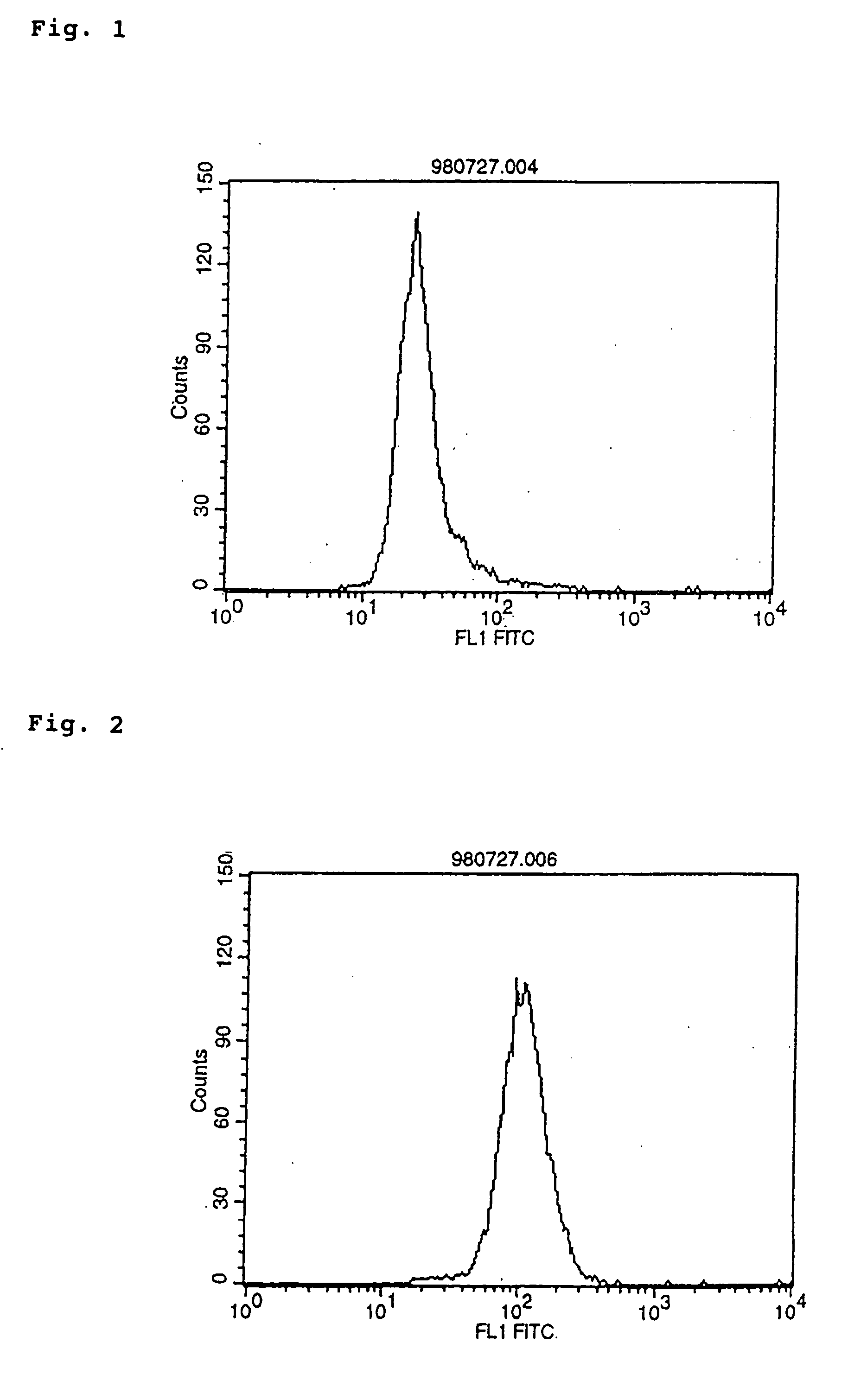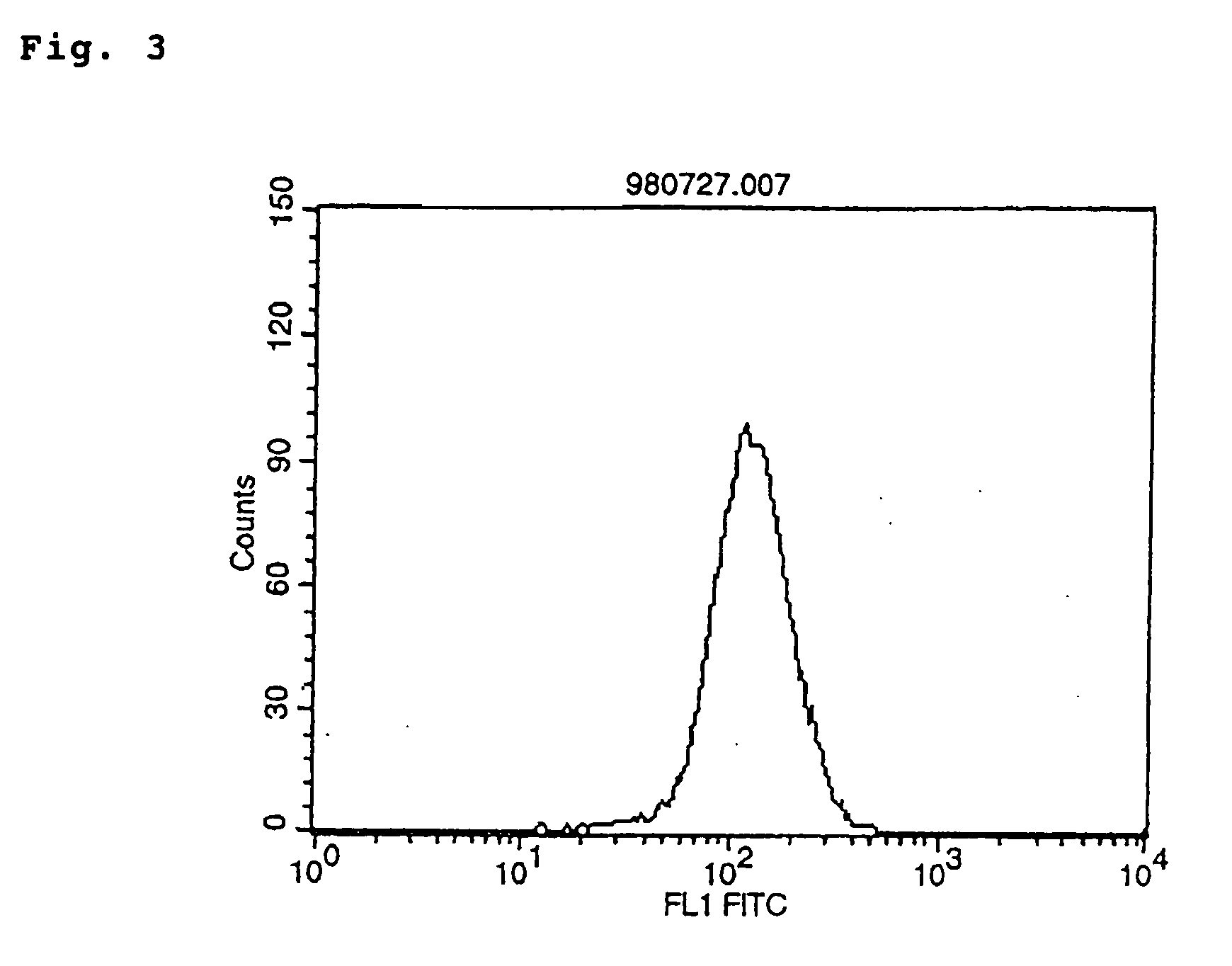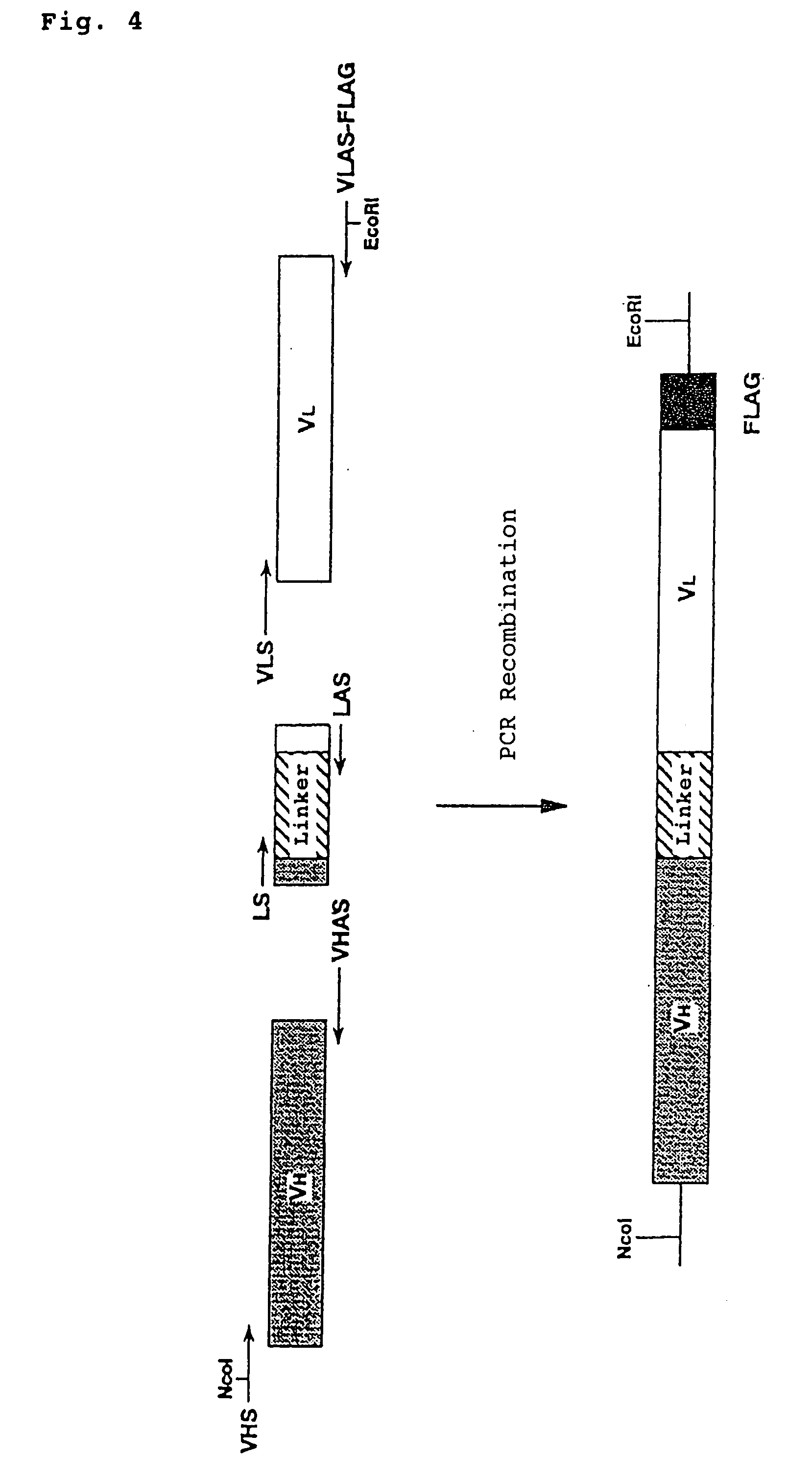Agonist antibodies
a technology of agonist and antibody, applied in the field of low molecular size agonist modified antibodies, can solve the problems of side effects such as hemagglutination, and achieve the effects of superior permeability into tissues, excellent antigen binding properties, and reduced molecular siz
- Summary
- Abstract
- Description
- Claims
- Application Information
AI Technical Summary
Benefits of technology
Problems solved by technology
Method used
Image
Examples
example 1
Cloning of DNAs Encoding V Region of Mouse Monoclonal Antibodies to Human IAP
[0073] DNAs encoding variable regions of the mouse monoclonal antibodies to human IAP, MABL-1 and MABL-2, were cloned as follows.
[0074] 1.1 Preparation of Messenger RNA (mRNA)
[0075] mRNAs of the hybridomas MABL-1 and MABL-2 were obtained by using mRNA Purification Kit (Pharmacia Biotech).
[0076] 1.2 Synthesis of Double-Stranded cDNA
[0077] Double-stranded cDNA was synthesized from about 1 .mu.g of the mRNA using Marathon cDNA Amplification Kit (CLONTECH) and an adapter was linked thereto.
[0078] 1.3 PCR Amplification of Genes Encoding Variable Regions of an Antibody by
[0079] PCR was carried out using Thermal Cycler (PERKIN ELMER).
[0080] (1) Amplification of a Gene Coding for L Chain V Region of MABL-1
[0081] Primers used for the PCR method are Adapter Primer-1 (CLONTECH) shown in SEQ ID No. 1, which hybridizes to a partial sequence of the adapter, and MKC (Mouse Kappa Constant) primer (Bio / Technology, 9, 88-89,...
example 2
[0102] The nucleotide sequence of the cDNA encoding region in the aforementioned plasmids was determined using Auto DNA Sequencer (Applied Biosystem) and ABI PRISM Dye Terminator Cycle Sequencing Ready Reaction Kit (Applied Biosystem) according to the manufacturer's protocol.
[0103] The nucleotide sequence of the gene encoding the L chain V region from the mouse antibody MABL-1, which is included in the plasmid pGEM-M1L, is shown in SEQ ID No. 5.
[0104] The nucleotide sequence of the gene encoding the H chain V region from the mouse antibody MABL-1, which is included in the plasmid pGEM-M1H, is shown in SEQ ID No. 6.
[0105] The nucleotide sequence of the gene encoding the L chain V region from the mouse antibody MABL-2, which is included in the plasmid pGEM-M2L, is shown in SEQ ID No. 7.
[0106] The nucleotide sequence of the gene encoding the H chain V region from the mouse antibody MABL-2, which is included in the plasmid pGEM-M2H, is shown in SEQ ID No. 8.
example 3
Determination of CDR
[0107] The V regions of L chain and H chain generally have a similarity in their structures and each four framework regions therein are linked by three hypervariable regions, i.e., complementarity determining regions (CDR). An amino acid sequence of the framework is relatively well conserved, while an amino acid sequence of CDR has extremely high variation (Kabat, E. A., et al., "Sequences of Proteins of Immunological Interest", US Dept. Health and Human Services, 1983).
[0108] On the basis of these facts, the amino acid sequences of the variable regions from the mouse monoclonal antibodies to human IAP were applied to the database of amino acid sequences of the antibodies made by Kabat et al. to investigate the, homology. The CDR regions were determined based on the homology as shown in Table 1.
2TABLE 1 Plasmid SEQ ID No. CDR (1) CDR (2) CDR (3) pGEM-M1L 5 43-58 74-80 113-121 pGEM-M1H 6 50-54 69-85 118-125 pGEM-M2L 7 43-58 74-80 113-121 pGEM-M2H 8 50-54 69-85 118...
PUM
| Property | Measurement | Unit |
|---|---|---|
| temperature | aaaaa | aaaaa |
| temperature | aaaaa | aaaaa |
| temperature | aaaaa | aaaaa |
Abstract
Description
Claims
Application Information
 Login to View More
Login to View More - R&D
- Intellectual Property
- Life Sciences
- Materials
- Tech Scout
- Unparalleled Data Quality
- Higher Quality Content
- 60% Fewer Hallucinations
Browse by: Latest US Patents, China's latest patents, Technical Efficacy Thesaurus, Application Domain, Technology Topic, Popular Technical Reports.
© 2025 PatSnap. All rights reserved.Legal|Privacy policy|Modern Slavery Act Transparency Statement|Sitemap|About US| Contact US: help@patsnap.com



